Finding the right DJ speakers is often the final link in the chain when putting together your DJ setup. There are hundreds of products on the market and the correct type for you will depend on where you mostly play your live sets.
If you’re someone who plays large clubs then the venue is most likely going to supply the sound system. However, most of us will be starting out in smaller venues and so we’ll need to buy our own speakers. This is where our in-depth DJ speaker guide comes into play.
Introduction
We’ve picked out the best DJ speakers in terms of value for money and offered up some excellent high-end and budget options as well. Are you looking for the best portable DJ speakers? No problem, we’ve got that covered. Need some banging DJ speakers for house parties or even a set of outdoor DJ speakers? We’ve got the right speakers for you. Maybe you just want to know which are the best DJ speaker brands out there at the moment? We’ll let you know the answers to all of these questions in our detailed review and buying guide below.
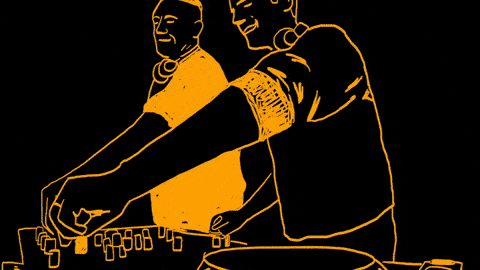
For now, let’s take a look at the eight speakers that we have selected especially for this guide. Regardless of how experienced you are in the DJing world, professional or a beginner, or if you’re only here to find a specific product like small or big DJ speakers, we’re sure that you will find a top choice to suit your needs.
Top 8 DJ Speakers Reviews
#1. QSC K10.2 Active 2000-Watt Loudspeaker
A+
A+
A
A
2000W
Active
2 x XLR-1/4" combo, 1 x 1/8"
2 x XLR, 1 x XLR
23 x 16 x 17 in
39 lbs
The K-series from QSC has been a top-seller with professional DJs for over a decade now. Power and durability are the two key factors that make these DJ speakers so popular. The K10.2 is the one QSC model that everyone seems to gravitate towards. It’s an active speaker that provides unbelievable power from its 10” woofer and 1.4” tweeter, putting out a huge 2000 Watts at its maximum output.
It’s the obvious choice if you are looking for top DJ base speakers. You can rely on the sound quality of these speakers time and time again in whatever situation you might find yourself in. The big plus about the K10.2 is how easy it is to set up and use. One look at the back panel and some people might feel slightly overwhelmed with all of the controls to hand. However, it comes with a handful of factory presets that cover pretty much all live music scenarios. If you do need to tweak any settings then the parameters are there ready and waiting for you to adjust.
The K10.2 speaker is not only a stylish speaker but it’s also very portable as well. A perfect choice for the traveling DJ. The Dual-Pole cups are an improvement on the previous models. This design feature allows you to position the speaker straight or with a down-tilt. It also works just as well as a floor monitor so you’ve got all bases covered.
The key feature of this speaker is the enhanced DSP circuitry. It’s what makes the K10.2 so responsive and powerful in its live environment. The DSP allows for a consistent performance across all frequencies which results in a superior listening experience for your adoring crowds! The K10.2 is one of the best powered speakers for DJs and many music professionals will tell you the same.
#2. Yamaha DBR100 700-Watt Speaker
A
A
A
A
700W
Active
2 x XLR/TRS Combo, 1 x Stereo
1 x XLR
15,1 x 15,9 x 22,9 in
30,9 lbs
The Yamaha DBR10 is a highly portable speaker option that offers 700 Watt output. A surprising amount of power when you consider its relatively small size. It’s fast becoming a popular choice for those who are looking for home DJ speakers yet it’s more than capable as part of a DJ PA system. The true versatility of the DBR10 becomes apparent when you notice that it comes with a D-Contour switch.
This gives you the option to easily flick between the main speaker and floor monitor modes. Another useful feature of the DBR10 is the switchable high-pass filter that lets you easily add a subwoofer to your sound system if you needed to. Yamaha has created a professional speaker that is suited for all occasions and that’s what we are looking for when we want value for money!
You’ve got various input and output connections that allow for mixers, instruments and media players. Plus, the onboard mixer gives you the option of using either a mixed or direct output. The DBR10 makes perfect use of DSP with a reliable and high-performance sound at all times.
Yamaha is a world-class brand and this certainly shows in the DBR10 spec. Versatility goes a long way when you are spending a lot of money on equipment. Plus, if you are looking for portability then you won’t be disappointed with these small DJ speakers. They’re not the smallest active DJ speakers on the market but the power they offer in relation to their size is impressive.
#3. Bose S1 Pro Multi-Position PA System
A
A
A
A
150W
Active
2 x XLR-1/4" combo, 1 x 1/8"
1 x 1/4" TRS
11,1 x 9,4 x 13,1 in
15,7 lbs
The Bose S1 Pro is an excellent choice for those playing in smaller venues and who need to travel around quickly and easily. This active speaker weighs in at just over 15 lbs. It’s hard to believe the power and the quality of sound that comes from the small and lightweight body. The speaker can be mounted, tilted, or seated and will produce rich audio to all corners of the room. The Auto EQ feature onboard means that there will be no hotspots on the floor and the ToneMatch technology offers precise sounding of voice and instruments with a flick of a switch. Perfect for any DJs who work with live musicians on stage!
The S1 Pro comes with a pre-installed Li-ion battery so you can set up and play pretty much anywhere. The convenient carry handle adds to the portability of the speaker, allowing for quick load-ins and exits for those on a busy schedule. The S1 Pro speaker is versatile when it comes to connectivity. You have Channel 1 and 2 that offer the XLR-1/4″ combo inputs with treble and bass EQ plus extra reverb options. Channel 3 is dedicated to the 3.5mm input and Bluetooth is available so you can stream music from any Bluetooth-enabled devices through the speaker. The onboard mixer also includes line output if you need to combine multiple S1 Pro speakers for larger venues. This is one of the best portable DJ speakers available right now. Created by a company who knows all about high-quality audio. The Bose S1 Pro comes with a slightly higher price tag when you take into account the power potential of other similar priced speakers. However, the features, portability, and performance go a long way in making up for the extra cost. Bose have got a winner on their hands with the S1 Pro.
#4. TURBOSOUND iNSPIRE iP300
A
A+
A
A+
600W
Active
2 x XLR-1/4" combo, Bluetooth
2 x XLR (link)
8,5 x 8,2 x 28,1 in
26,2 lbs
The Turbosound iNSPIRE iP300 is a surprisingly powerful active-type speaker. The slim design doesn’t mean you lose any power and it can hold its ground against any of the standard shaped speakers out there. It’s a 600 Watt design with two 6.5” woofers and four 2” neodymium drivers that have been strategically placed to produce a 180-degree, balanced soundscape. The iNSPIRE iP300 will not let you down when it comes to sound quality.
The onboard DSP from Klark Teknik is a clever piece of technology that analyzes and tweaks the incoming signal in real-time to ensure the sound quality is always optimized. It’s been described as having your very own sound engineer with you. It dials in perfect EQ whilst compressing and filtering the sound to create the perfect audio experience for your crowd to enjoy.
The built-in Class D amplifier offers superior power and performance and removes any chance of overheating when you need to play all night long. You can also control the onboard mixer via your iPhone/iPad and connect dynamic mics and line-level instruments using the XLR and jack connections (balanced and unbalanced). The LCD display makes every change quick and easy and furthermore you’ve got the Bluetooth connection that lets you stream any music to the speaker (why not couple this speaker up with any of our recommended Bluetooth Turntables?).
The iNSPIRE iP300 from Turbosound is definitely a modern age DJ speaker. It’s full of features and it makes the process of producing high-end audio quick and easy. You simply plug in and let the onboard DSP do all the hard work for you. A top choice if you are looking for wireless DJ speakers. It’s excellent value for money when you consider all of the features you get with this design from Turbosound.
#5. Mackie Thump12BST 1300W Powered Loudspeaker
A+
A
B+
A
1300W
Active
2 x XLR-1/4" combo, Bluetooth
1 x XLR (mix out)
14 x 14,1 x 24,2 in
36 lbs
Mackie is a prominent name in the world of DJ speakers. The popular Thump12BST model is an active speaker and by the looks of the reviews and feedback, it’s a fan favorite amongst Mackie fans. It comes as no wonder as this DJ PA speaker combines both huge sound and state of the art technology in perfect unison. The three-channel mixer comes with two Vita+ preamps and will easily handle line-level, mic, and instrument signals. You can dial in a wide range of sounds with the Thump12BST settings, using the EQ and highpass filter to great effect. It also comes with six different speaker modes so you can quickly hit a certain sound if you so need.
The Bluetooth and wireless connections are both very useful features for DJs and those who play in smaller sized venues. You can stream music directly from your Bluetooth-enabled device and wirelessly link up speakers in various layouts. The high-resolution screen is also a nice touch and displays all of your levels for quick reference. If all of that wasn’t enough then you can even control the whole speaker system from your Android or iOS device!
The sound of the Thump12BST is impressive and you will be surprised at how much power the 12” woofer and 1.4” tweeter can produce. The rugged design makes it suitable for life on the road and it’s light enough to carry. If you’re looking for a bass-thumping speaker then you won’t find much better than the Mackie Thump12BST. Mackie is offering great value for money once again. You’ll be ready to take on any venue with two of these Thump12BST’s in your DJ speakers set!
#6. JBL EON610 Portable 10″ Speaker
B+
A
B+
A
1000W
Active
2 x XLR, 2 x TRS 1/4″, Bluetooth
1 x XLR (thru output)
28 x 17 x 16 in
32 lbs
The JBL EON610 is widely considered to be one of the top three choices when it comes to DJ speakers with built-in amplifiers. This powered speaker makes use of JBL’s advanced audio technology that gives you professional sounding results every time. You’ve got more than enough headspace with the 1000 Watt potential and the onboard EQ system can be controlled wirelessly via the Bluetooth connection. We are comfortable in saying that the EON610 is one of the best Bluetooth DJ speakers available at the moment as well. You’ll find that they will connect up with most DJ turntables, which comes in handy if you have other DJs using your speakers.
The dual combo XLR/TRS inputs give you plenty of versatility. On the back panel, you also have an XLR thru connection which allows you to route signals to additional speakers in the EON600 series. The multiple connection options make these great speakers for DJ controller units.
The performance and portability combine perfectly to give you a well-rounded speaker design. It’s obvious that JBL has put a lot of thought into getting this design just right. It’s a top-rated speaker from a popular and well-established brand. We firmly believe that the EON610 is one of the best DJ speakers for the money.
#7. Behringer EUROLIVE B210D PA Speaker
B+
B+
B+
A+
200W
Active
1 x 1/4", 1 x XLR
1 x XLR
9,6 x 11,5 x 18,4 in
19,2 lbs
The Behringer Eurolive B210D speaker is a low-cost option for those on a budget. At such a low price you still get a big sound like any other DJ loudspeaker. This is all thanks to the effective DSP design and the impressive power-to-weight ratio setup. The Eurolive series all come with built-in signal processing so your sound is always going to come out optimized. The B210D speakers are designed so that you never run into the trouble of signal overload. The crossover and EQ help to keep the low end clean, effectively removing any frequencies that create that unwanted muddy sound which low-quality speakers are guilty of creating. Plus, the onboard limiter keeps a clean signal running through and prevents any potential audio clipping from occurring.
The Eurolive B210D from Behringer is a light speaker but still manages to pack a punch. You’ve got 200W of power coming from the 10” woofer and 1.35” tweeter which is more than enough for smaller sized venues. Class D amps are used which means they won’t overheat if you intend to use them for long periods of time.
A useful feature for those who work long hours on the DJing circuit. We see this speaker as a perfect choice for background music or for DJs who are just starting out. Behringer is offering a budget option that has value for money and a professional sound. These cheap DJ speakers are low in price but they still have plenty of power to offer in the right environment.
#8. Electro-Voice ELX200-10 Passive Loudspeaker
B+
B
B+
B+
1200W
Passive
1 x speakON, LR AUX
1 x XLR, 1 x speakON
23 x 15 x 16 in
33,7 lbs
The ELX200-10 from Electro-Voice is one of the best options out there if you are looking for passive type speakers. The powered types are recommended for most situations but we thought that we should at least include one passive option in this review. First off, you will need your own amplifier in order to get these working. However, once everything is set up you’ll love the sound quality of these speakers. The 10” woofer and titanium tweeter offers punchy bass and amazing clarity in the high-end frequency ranges. There are two SpeakON inputs on the back panel and the three handles make carrying the ELX200-10 easy and hassle-free.
The speaker is built within a tough and tour-worthy casing so it’s more than capable of surviving a few knocks and scrapes. The relatively small size also makes this speaker a great option as a floor monitor when space is limited on stage. You will notice that the price tag reflects the passive design and it does come a lot cheaper than the other active speakers in this review.
If you are specifically looking for passive DJ speakers then we think you should be considering these from Electro-Voice. It’s also worth noting that if you like the style of these speakers, but prefer to have the active type design, then they do offer powered versions as well.
What Is a DJ Speaker?
I think it’s best that we start at the beginning and the get the term “DJ Speaker” cleared up once and for all.
In simple terms, a DJ speaker is a speaker that is capable of playing loud music to a large number of people.
The varying levels of speaker quality will determine the overall sound performance and experience. You have probably heard the terms PA, powered speakers, PA speakers. There are all sorts of different names floating around the internet but they all point towards the same thing. When it comes down to it they are all used for one purpose: to produce high-quality audio sounds in large spaces.
Studio Monitors Are Not DJ Speakers
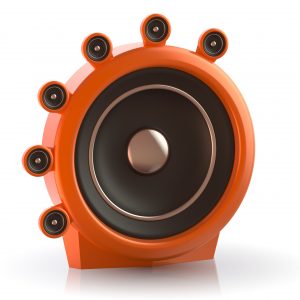 A common misconception is that studio monitor types can be used in place of DJ speakers. Let’s be clear that this is not the case. Yes, you could use them if you are practicing at home but they are solely designed for mixing and producing music. Studio monitors are perfect for reference and being able to hear the finer details in your music.
A common misconception is that studio monitor types can be used in place of DJ speakers. Let’s be clear that this is not the case. Yes, you could use them if you are practicing at home but they are solely designed for mixing and producing music. Studio monitors are perfect for reference and being able to hear the finer details in your music.
They are not great for pumping out loud music for long periods of time and they won’t last long if you do so. DJ speakers are designed to channel music at loud volumes and wider angles, perfect for large spaces and club environments. They’re also a lot more durable than the delicate studio monitor design and will survive the knocks and scrapes that come with traveling on the road.
Things To Consider When Buying DJ Speakers
We’ll now run through a list of the most important features of the DJ speaker, plus some of the less important, to give you a rounded and clear view on what you need to create the best DJ sound system for your individual needs.
Passive vs Active Speakers
 The main difference between passive and active speakers is the power factor.
The main difference between passive and active speakers is the power factor.
Passive speakers are unpowered and will require separate DJ speaker amps that match up with the Watt of the speakers they are connecting to. It’s not overly complicated but it will require some thought and of course, it will cost more money with the extra purchase of the external amp.
Active speakers, on the other hand, come with built-in amplifiers and are ready to use straight out of the box. The amp inside of the speaker will mean that you’ve got hands-on control of the volume and EQ parameters.
Active speakers are the recommended option for most people. You will end up paying more but the convenience of the active speaker design makes up for the extra cost. All you need to make sure is that you are using the correct audio cable types when connecting your equipment. You’ll notice that most of the speakers in our reviews are active speakers. It’s the way to go if you want more control and reliability from your sound.
Power (Watts)
You can’t really go wrong if you stick to the thought that the more Watts, the louder the speaker will be. The amount of wattage that you require will depend on the environments that you intend to play in.
Watts equal power and if you’re looking to play in venues with 1000 people and above then you’ll need at least a 1000 Watt speaker to keep the crowd happy. If you’re playing to small rooms with 100 people or fewer then you’ll find that a 200 Watt speaker will be more than adequate. Obviously, the more powerful the speaker the better.
Getting the most Wattage for your budget will give you more space to work with in terms of loudness and will also keep options open as you start to play bigger venues. More often than not, the bigger venues provide you with professional DJ speakers anyway but having your own setup is always useful.
Woofer Size
The size of the woofer cone is measured in inches and determines how much bass the speaker can cope with. Often described as low-end you’ll find that most DJ speakers are capable of handling extreme levels of low-end bass. The minimum you’re likely to see is 8” and this is fine for standard sized rooms and if you’re not playing bass-heavy music. However, if you’re a DJ who regularly plays drum and bass music or anything that is bass-heavy then you’ll be wise to use a 10”-12” woofer.
You will instantly notice the bass quality in these larger woofers. Although only a few inches bigger, they give you a lot more potential to play those big, wall-shaking bass lines. If your budget allows for it, then 15” woofers are available but another alternative is to use a subwoofer as an add-on to your speaker. Subwoofers are dedicated to bass and they help to reduce the stress on your speakers.
Again, it all depends on the type of music you play and how loud you need to go. If your budget stretches to a 12” woofer then you’ll be sitting comfortably knowing that your speaker will be able to cope with most music and venues.
Portability and Durability
If you are always on the road with your music then you will appreciate the importance of the portability and durability. However, DJs just starting may not have experienced the trauma of lugging around large pieces of equipment (yet)!
Most speakers are ergonomically designed with multiple handles on them located around the side and top panels. This makes it a lot easier to carry in and out of venues and puts less strain on your body. Nowadays, many designs have the advantage of modern technology with powerful speakers being housed in smaller bodies. In any case, it’s always wise to double check the dimensions and weight of the speakers.
Will they fit in your car or van with all of the other gear loaded in as well? Is the speaker itself built for the road and traveling? Most speakers are made with durable materials nowadays so you shouldn’t need to worry too much. Like always, it’s worth checking the smaller details like portability and durability just to make sure you have everything covered before you hand over your money.
Best Brands
You’ll find a handful of brands at the top of the list when you’re searching for your next professional DJ speakers. We’ve only included some of the best brands in our reviews and these come highly recommended from experienced DJs and musicians.
Top brands such as Mackie, QSC, JBL, and budget-friendly options from Behringer all make the list. These companies live and breath audio performance so you know that you’re getting quality. There are cheap options out there from unknown companies and people do buy from them because they think they are getting a bargain. The fact is that they will only make this mistake once.
Audio performance is not something you can cut corners with. When it comes to DJ speakers, you need to pay the money to get quality and that can be said for most sound equipment.
Budget

We can’t all be as rich as Huell from Breaking Bad…
Budget is a big factor when it comes to buying the right equipment. We know that most people can’t go out and buy the top speakers and that’s why our reviews cover the full range of price options. Unfortunately, this part of the DJ setup is not going to be cheap, especially when you need to buy multiple speakers.
There are cheap options out there but if you want to be successful then you should stay well clear of them. They won’t get you anywhere in the DJing world. The bright side is that companies are starting to create entry-level speakers that are ideal for beginners and for those environments that don’t require the wall-shaking bass that the big speakers are capable of. You’ll find some good deals in and around the $250-mark. You’ll most likely upgrade soon after that when you start making money from your first DJ gigs.
The main point to take away is that you should get as much power as your budget allows. This leaves you with a speaker setup that you can grow with as you get more successful and play bigger venues. Plus, when you think about it, you spend all of that time practicing and creating your DJ sets. Surely you would want to portray all of that hard work in the best way possible?
Do your music justice and let the people listen to it in the way you intended by using the best DJ speakers available within your budget.
The post Best DJ Speakers: Powered PA Systems For Any Scenario appeared first on SoundWiz.
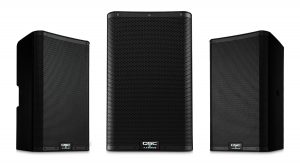
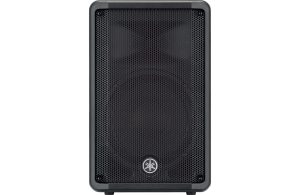
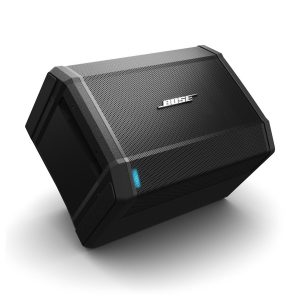
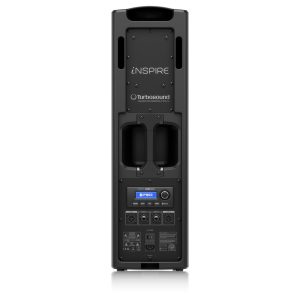
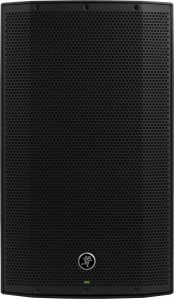
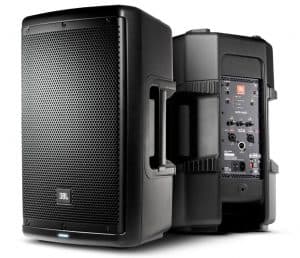
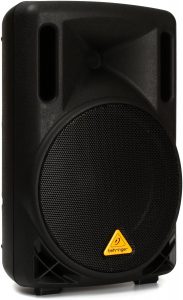
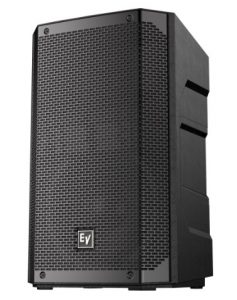
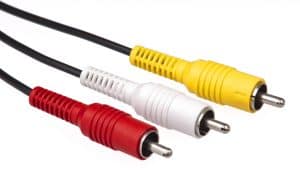 The RCA connectors have been used widely within audio devices since its introduction in the 1940s. For audio devices intended for casual use in homes, the RCA connectors are by far most common. They’re small, cheap and easy to use. For that reason, they’ve become so popular that you rarely see a household without them nowadays. While many of the newer TVs have moved on to using HDMI, products such as
The RCA connectors have been used widely within audio devices since its introduction in the 1940s. For audio devices intended for casual use in homes, the RCA connectors are by far most common. They’re small, cheap and easy to use. For that reason, they’ve become so popular that you rarely see a household without them nowadays. While many of the newer TVs have moved on to using HDMI, products such as  As opposed to RCA connectors,
As opposed to RCA connectors, 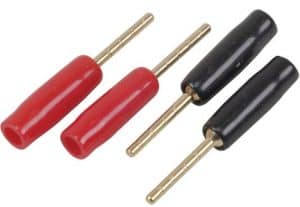 The Pin plug is the smaller version of the Banana Plug. You will find that pin plugs come in sizes between 2mm and 3mm whereas the bigger Banana plugs are 4mm in size. Not a lot of difference in size at all but the Pin plugs do have their own design characteristics. They do not use the spring contact like the Banana plugs but instead use binding posts that are designed with holes through the center.
The Pin plug is the smaller version of the Banana Plug. You will find that pin plugs come in sizes between 2mm and 3mm whereas the bigger Banana plugs are 4mm in size. Not a lot of difference in size at all but the Pin plugs do have their own design characteristics. They do not use the spring contact like the Banana plugs but instead use binding posts that are designed with holes through the center.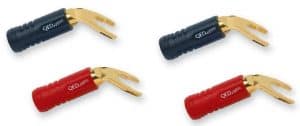 Spade Plugs are a popular choice as they give you one of the most secure and reliable connections. They often come as crimp-on or screw-on styles, the latter being the most common option. To connect the screw-on type you simply place the open part of the U over a five-way binding post and then screw the nut down onto the plug. You will find some spade plugs that are shaped with 3/4 of a circle. People often find these circle types to offer an even stronger connection than the U-shaped design.
Spade Plugs are a popular choice as they give you one of the most secure and reliable connections. They often come as crimp-on or screw-on styles, the latter being the most common option. To connect the screw-on type you simply place the open part of the U over a five-way binding post and then screw the nut down onto the plug. You will find some spade plugs that are shaped with 3/4 of a circle. People often find these circle types to offer an even stronger connection than the U-shaped design. The most common XLR connector is the circular, 3-pin design. You can also find 4, 5, 6, and 7-pin designs in use. Plus, a mini-XLR connector is also available for those smaller projects. You will have no doubt seen these in use in various microphone and audio/video applications. A popular choice of connector in home audio setups and home studios. You will notice that a lot of the XLR connectors come with a locking device that ensures that they can’t be easily pulled out. This is a simple yet extremely useful design feature that users are quick to appreciate.
The most common XLR connector is the circular, 3-pin design. You can also find 4, 5, 6, and 7-pin designs in use. Plus, a mini-XLR connector is also available for those smaller projects. You will have no doubt seen these in use in various microphone and audio/video applications. A popular choice of connector in home audio setups and home studios. You will notice that a lot of the XLR connectors come with a locking device that ensures that they can’t be easily pulled out. This is a simple yet extremely useful design feature that users are quick to appreciate.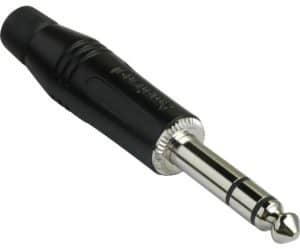 The TRS connector is one of the most well-known connections in the professional audio environment. Widely known as the 1/4” speaker jack type, it can be seen on all sorts of audio equipment. The TRS initials stand for tip, ring, and sleeve. These three terms describe the three contact points of this wire plug design, giving the TRS connector its balanced nature. As opposed to the unbalanced, TS connector design with two contact points (tip and ring). As well as the standard 1/4“ size, the TRS connector also comes in two other useful sizes of 3/32″ and 1/8″.
The TRS connector is one of the most well-known connections in the professional audio environment. Widely known as the 1/4” speaker jack type, it can be seen on all sorts of audio equipment. The TRS initials stand for tip, ring, and sleeve. These three terms describe the three contact points of this wire plug design, giving the TRS connector its balanced nature. As opposed to the unbalanced, TS connector design with two contact points (tip and ring). As well as the standard 1/4“ size, the TRS connector also comes in two other useful sizes of 3/32″ and 1/8″.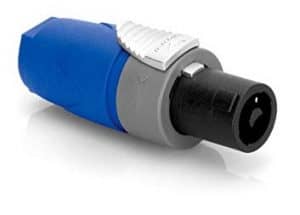 The
The 
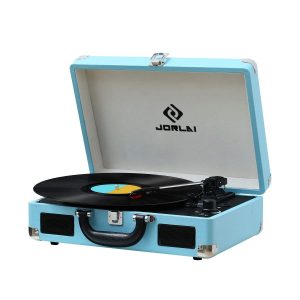
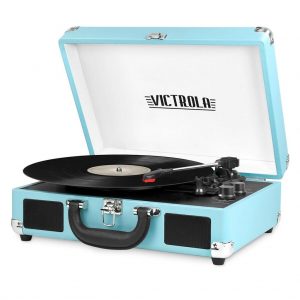
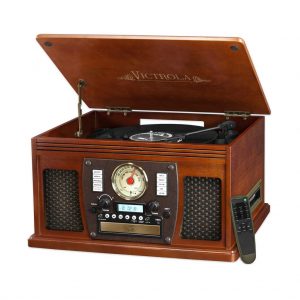
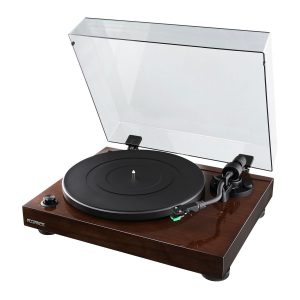

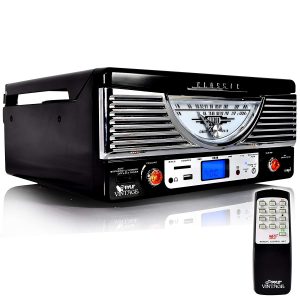
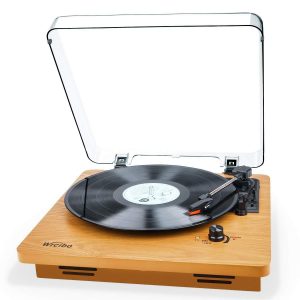
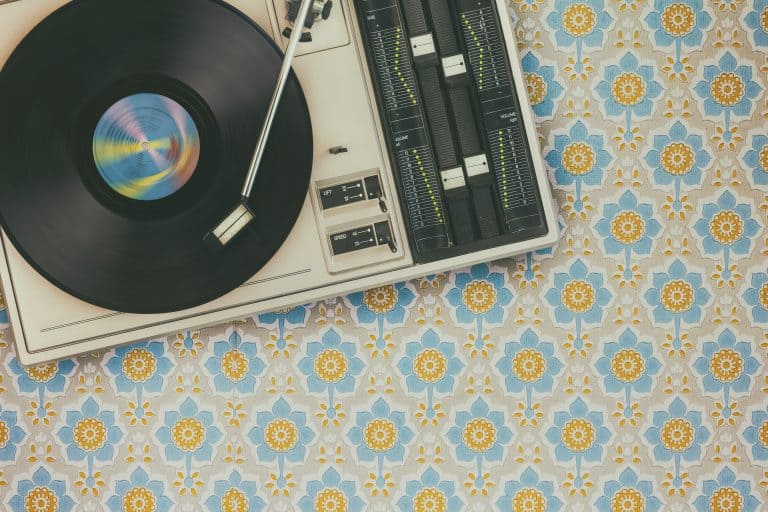 Buying a vintage record player can mean one of two things nowadays. You either buy an old design that comes with modern technology, such as Bluetooth and USB. Else you actually go hunting for something that was built years ago. Perhaps you’ve got your eyes on one of those
Buying a vintage record player can mean one of two things nowadays. You either buy an old design that comes with modern technology, such as Bluetooth and USB. Else you actually go hunting for something that was built years ago. Perhaps you’ve got your eyes on one of those  One of the main issues with anything vintage is the difficulty in finding replacement parts. If you’ve got a rare model, then you’re going to have a tough job of finding the right parts or something similar to fit. You might find something on the internet with sites like eBay and record player forums.
One of the main issues with anything vintage is the difficulty in finding replacement parts. If you’ve got a rare model, then you’re going to have a tough job of finding the right parts or something similar to fit. You might find something on the internet with sites like eBay and record player forums.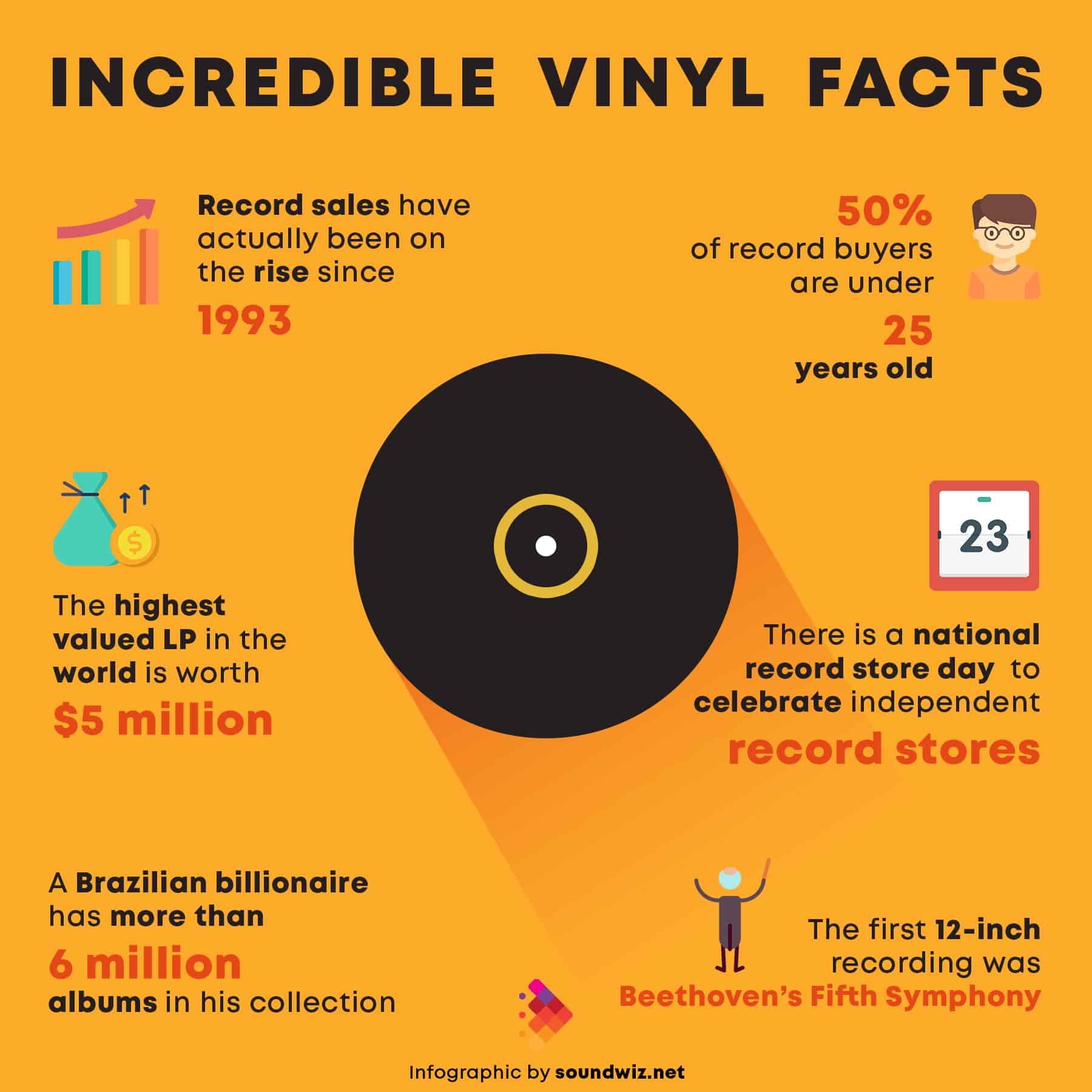
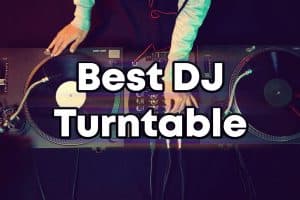 The DJ turntable is a different breed to the standard turntable that we all know and love. It packs more punch. It’s often a lot heavier and you’ll definitely notice a lot more specialist features onboard. Any turntable that claims to be DJ-orientated should use solid, reliable components. The life of a DJ involves a lot of traveling, setting up, and packing away. Not to mention the constant wear and tear from scratching and mixing. In other words, they need to be tough or else they won’t last very long.
The DJ turntable is a different breed to the standard turntable that we all know and love. It packs more punch. It’s often a lot heavier and you’ll definitely notice a lot more specialist features onboard. Any turntable that claims to be DJ-orientated should use solid, reliable components. The life of a DJ involves a lot of traveling, setting up, and packing away. Not to mention the constant wear and tear from scratching and mixing. In other words, they need to be tough or else they won’t last very long.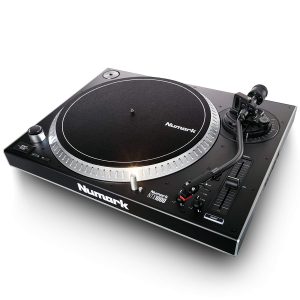
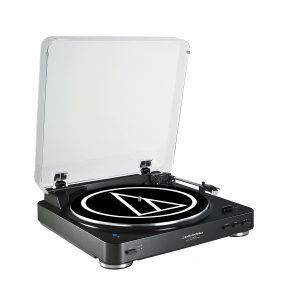

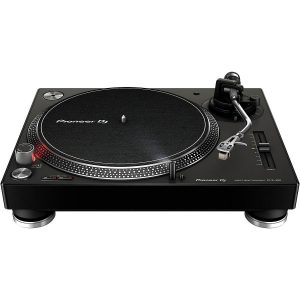
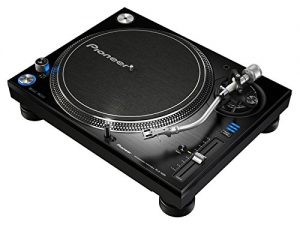
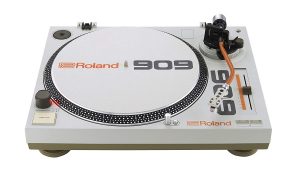
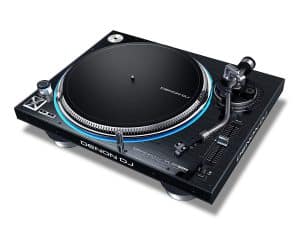
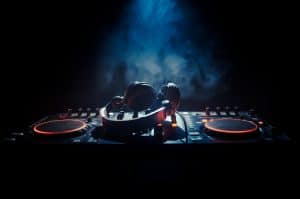 DJ turntables are unique in their design and makeup. It takes a blend of power and precision to create a well-rounded turntable. It’s not an easy task to design something that will keep up with the demands of today’s DJ. Legendary brands such as Technics have some excellent designs but most of us don’t have the budget. You can end up paying $1000s for a top-rate turntable, but luckily for us, there are plenty of options within a reasonable price range.
DJ turntables are unique in their design and makeup. It takes a blend of power and precision to create a well-rounded turntable. It’s not an easy task to design something that will keep up with the demands of today’s DJ. Legendary brands such as Technics have some excellent designs but most of us don’t have the budget. You can end up paying $1000s for a top-rate turntable, but luckily for us, there are plenty of options within a reasonable price range.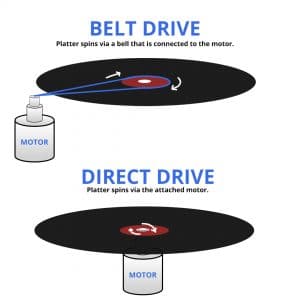 Direct-drive motors are located underneath the center of the platter in direct-drive turntables. The center location ensures higher torque and lower speed fluctuations. These are essential for a DJ. Belt-drive motors are too inconsistent. They do not provide anywhere near the amount of control that a DJ requires. You need a constant speed to DJ successfully and even the slightest fluctuation in speed will create galloping (when beats are playing out of sync).
Direct-drive motors are located underneath the center of the platter in direct-drive turntables. The center location ensures higher torque and lower speed fluctuations. These are essential for a DJ. Belt-drive motors are too inconsistent. They do not provide anywhere near the amount of control that a DJ requires. You need a constant speed to DJ successfully and even the slightest fluctuation in speed will create galloping (when beats are playing out of sync).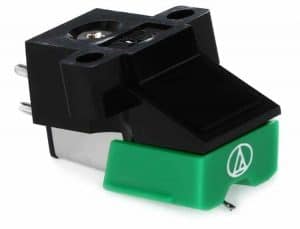
 S-shaped tonearms offer better sound quality and stability. Straight tonearms are better at tracking. Whichever style you choose, make sure it’s built with durable materials. The stronger the tonearm, the better. Look out for aluminum or carbon fiber tonearms for the best performance.
S-shaped tonearms offer better sound quality and stability. Straight tonearms are better at tracking. Whichever style you choose, make sure it’s built with durable materials. The stronger the tonearm, the better. Look out for aluminum or carbon fiber tonearms for the best performance.